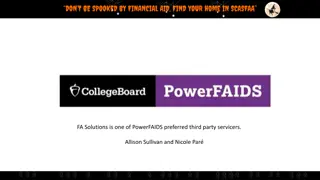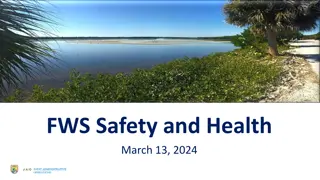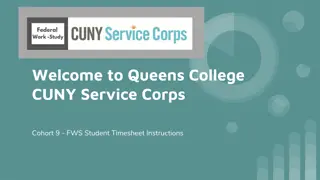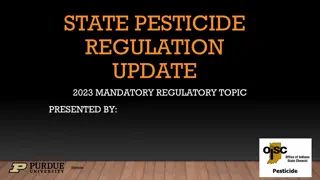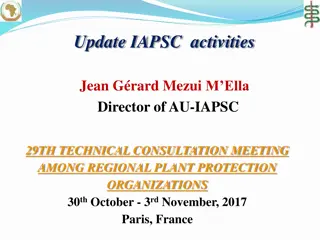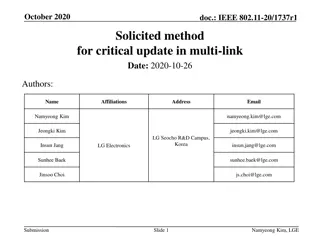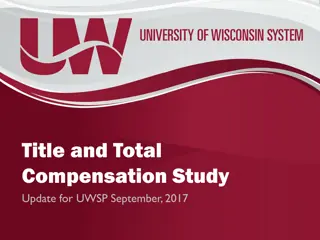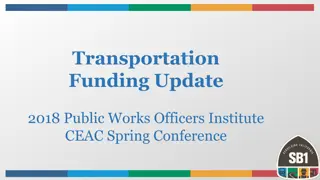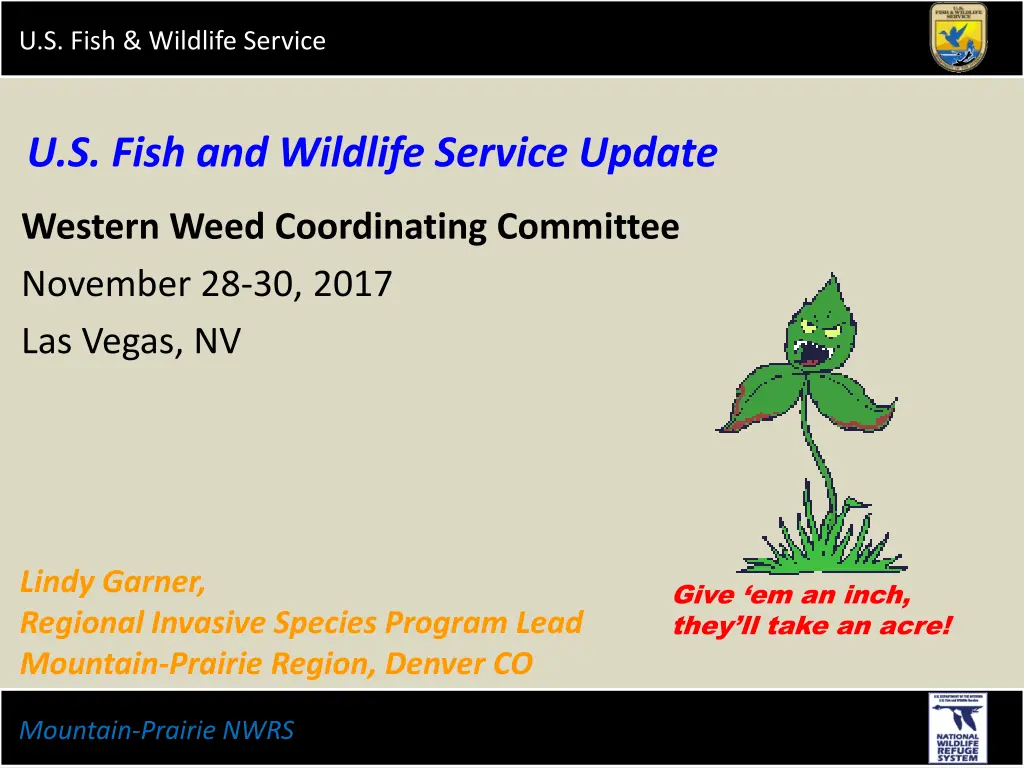
Conservation Strategies for Managing Invasive Plants in Mountain-Prairie NWRS
Explore the crucial conservation conversations held by the U.S. Fish and Wildlife Service focusing on prioritizing, defining, and communicating primary management objectives for invasive species in the Mountain-Prairie Region. Learn about the process of evaluating species distribution, assessing weed impact, and implementing effective strategies to address the threat posed by non-native plants.
Download Presentation

Please find below an Image/Link to download the presentation.
The content on the website is provided AS IS for your information and personal use only. It may not be sold, licensed, or shared on other websites without obtaining consent from the author. If you encounter any issues during the download, it is possible that the publisher has removed the file from their server.
You are allowed to download the files provided on this website for personal or commercial use, subject to the condition that they are used lawfully. All files are the property of their respective owners.
The content on the website is provided AS IS for your information and personal use only. It may not be sold, licensed, or shared on other websites without obtaining consent from the author.
E N D


